Table of contents
For those who don't know, a vertical vegetable garden or hanging garden is a gardening technique that allows plants, vegetables, and herbs to grow vertically and be hung on supports away from the ground, such as walls and walls.
The intention is that anyone can have their own private garden at home, and that, besides producing their own fresh food and spices, it is possible to make the environment more cheerful and beautiful.
So you can forget that excuse that you don't have enough space and therefore don't grow any kind of garden.
The vertical gardens are indicated, precisely, for those who have little space available for a common planting, either in houses or apartments. Its cultivation also brings many benefits, because it allows you to take time out of your busy day to relax, reflect and leave stress aside, in a personalized and quiet corner.They form mini gardens full of charm.
Planning your vertical vegetable garden
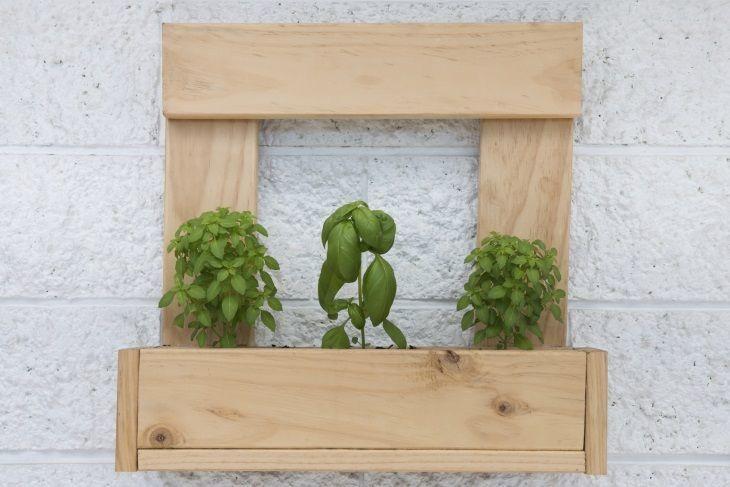
It is important to note that when setting up your vegetable garden, initial preparation is necessary, involving some factors that will be indispensable for your plant to grow strong and healthy. Be sure that the place that will house your plants is well ventilated and has sunlight. Tânia, responsible for the nursery and floriculture Viverde, explains us that the ideal place is one that has sunEach plant requires different care, while some need at least 5 hours of sun, others maybe not so much, so try to do some research beforehand paying attention to these details.
Being careful when mixing different types of plants is also essential, because they do not always match. A good example is the mint, which is characterized as an invasive plant, and must have its own place so that it does not harm the growth of other species. Short rooted plants are the best to be planted in this type of gardening, precisely because of the limited size of the supports.
The container of your plant, vegetable or herb must also be thought of previously, so that the size of the places are compatible. "It is possible to find single pots (ceramic, plastic, frame covered with synthetic fiber), rectangular planters (plastic) attached by French hand or even iron supports. And, for those who want to invest more, there are modular structures bought per m²Don't forget to check if the structure that will be fixed to the wall will support the weight of your pots, which will receive a good amount of soil and will be watered constantly, increasing the weight.
Check out some of the different types of vases found in the market:
- Common Vases The half-moon vases, perfect for walls, are also widely used and can be grouped with others of the same type to compose a place.
- Alternative vessels These can be coconut fiber, which refers to a more natural and rustic style; food boxes which, if in good condition and painted, can become great ornaments; PVC pipes, which when cut to length can accommodate small plants, which in this case will have limited growth due to the size of the container; PET bottles, you can use the bottle both lying down and standing up,This model, as well as the previous one, will need a support place to be arranged on the wall; wooden boxes, despite taking up more space, are great aesthetically, and can be painted in various colors; gutters can also be used as vases, the metal models bring more elegance and can receive the most different types of pots and vases.modular, a new type of vertical pots that can be fitted into each other and can have their irrigation systems connected, making care easier.
- Additional Also, as an aesthetic touch, vertical planters and pallets can be added to the pots, either to delimit the area or to create a super practical and original space.
What to plant in a vertical vegetable garden
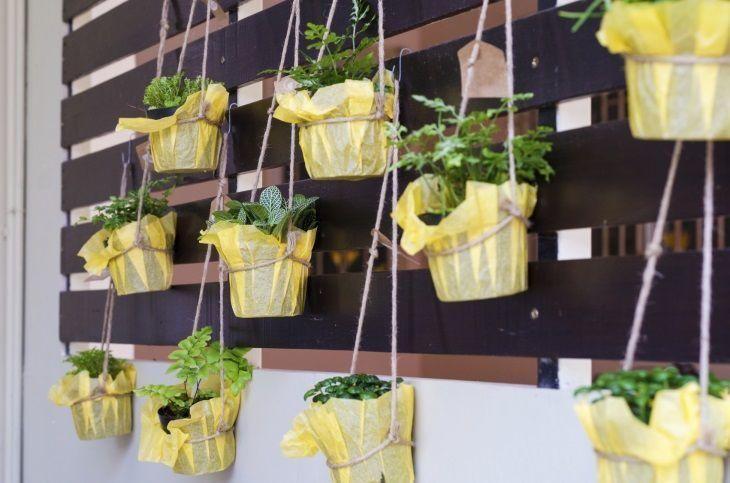
One of the most fun parts of the process of creating your vertical vegetable garden is being able to choose which vegetables to grow. Despite some limitations, there are still many options of plants that can be grown. Among them are oregano, marjoram, mint, thyme, cilantro, parsley, sage, chives, watercress, basil, and melissa. Understand a little more about each one in thisarticle that talks about home gardens.
You can, for example, reuse the water used for cooking vegetables, because it ends up being rich in nutrients and ideal for stimulating a healthy growth of the vegetable, just remember that the water must be cold, without salt or oil.
To prevent the roots from rotting due to excess water, especially during winter when plants take longer to absorb liquids, add elements at the bottom of the pot that can drain the water efficiently, such as stones, pieces of foam or even small holes.you won't have to worry about them so much.
How to make a vertical vegetable garden at home - step by step
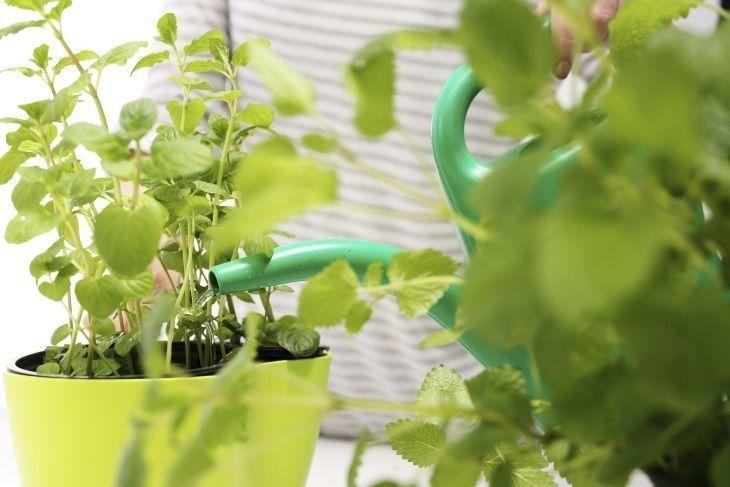
Setting up your own vegetable garden to bring more life and charm to your home can be a pleasurable task; you can use various materials and create different environments. The chosen tutorial uses pieces of wooden board, but, for those who prefer, you can replace them with pallets or any other type of decorative material, the process is basically the same.
Materials required
- 2 pieces of board for support, the size is up to you, but each board used in the tutorial measures 100x30cm;
- Paper sandpaper for crafts;
- 1 can of wood varnish, the color used was Mahogany, but it can be chosen according to your taste;
- Roller or brush;
- 6 canning jars;
- 1 pencil;
- 1 ruler 30cm;
- 1 saw;
- 6 pressure clamps;
- 12 nails;
- 1 hammer;
- Stones, soil, and small plants that will be placed in the pot;
- 1 chalk.
Step by step
- Sand each wood board, removing any chips or imperfections, and you can use this step to round off the finish to your liking;
- Then apply the varnish over the entire length of the board with a roller or brush. You can apply as many coats as you think necessary, the more often you apply, the darker the material will become;
- While the boards are drying, take the opportunity to leave the canned glassware clean and ready for use;
- When the varnish is dry, mark on the boards the places where each vase will be fixed. Take the ruler and make 3 marks along the wood, 25cm apart each. From there, make a mark horizontally also, 12cm inside the board. This is where each vase will be fixed;
- Take a piece of wood that will not be used and cut the 1cm width of wood into a strip shape. Cut the strip into 6 3cm pieces, one for each pot;
- Apply the varnish to the pieces of wood as well, to make it the same shade as the board;
- After it is dry, it is time to position each piece of wood at the right angle. To do this, place the pieces on the board, mark them, and turn them slightly so that the pots can follow their movement later;
- Open the clamps, place them on top of the wood and fix them both with 2 small nails. Repeat the process for each vase;
- With the support ready, it's time to prepare the pots. Add stones to the bottom of each bridge, they are very important for your water to drain and prevent root rot. Place soil, if necessary, a little organic fertilizer too, and finally, your plant;
- Place the pots on the clamps and tighten them so that they are secure and will not slip when they are fixed to the wall;
- Finally, add details to the wood to personalize it. There, your vertical vegetable garden is ready!
40 vertical vegetable garden ideas for you to get inspired
There is nothing like using fresh herbs and spices in the preparation of your food, and even better when you can use them to decorate your room in a very unique way.
The kitchen, the living room and the outdoor areas are the preferred areas for growing these little plants, enjoy the selection below to get inspired and create your own custom hanging vegetable garden!
1. great option for the balcony
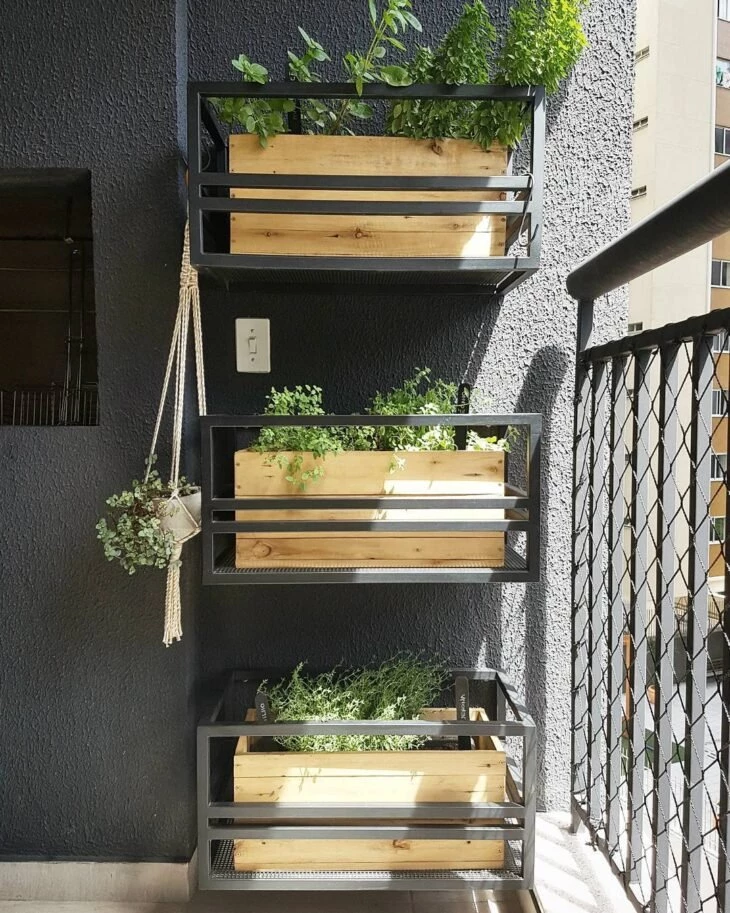
2. with pallet support
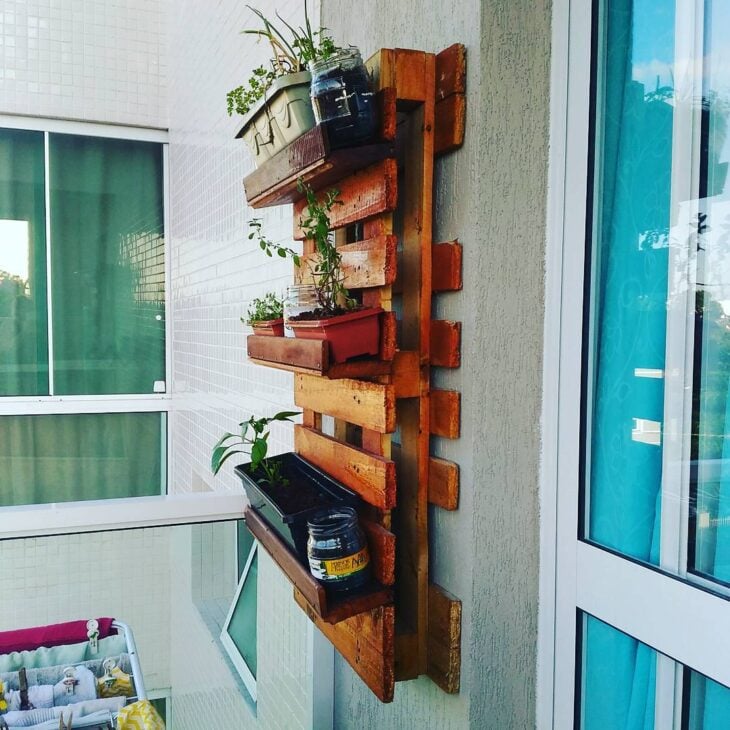
3. simplicity and personality in the corner of the house

4. a large space that comes alive with the presence of plants
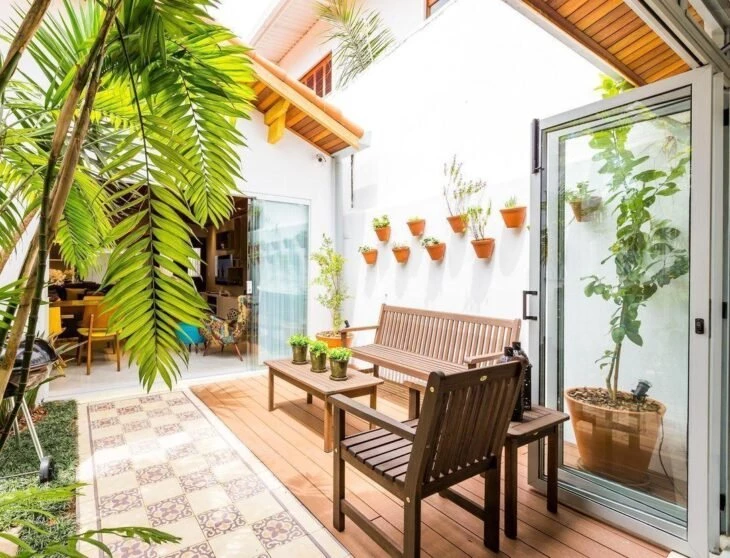
5. details of a vertical vegetable garden made with pipes
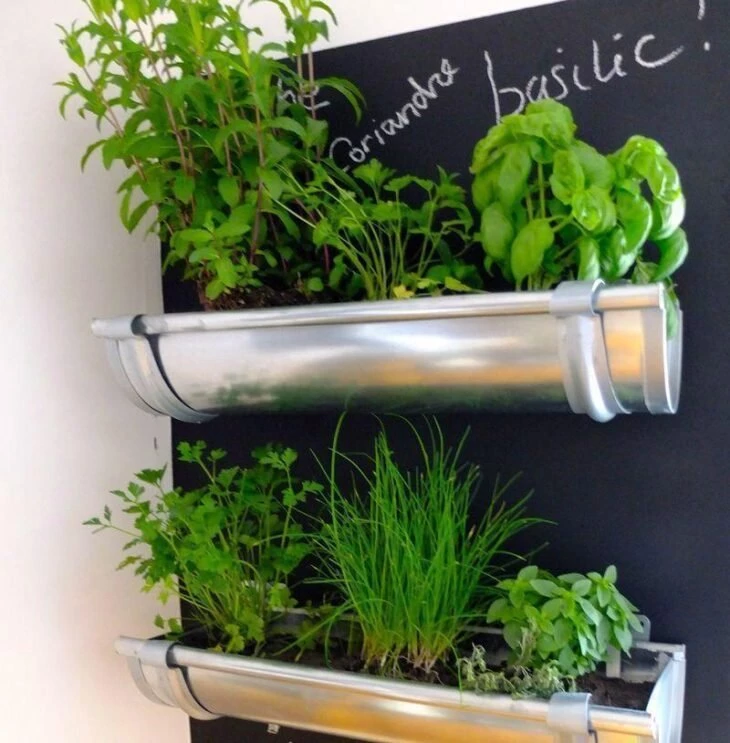
6. outdoor area with a rustic touch
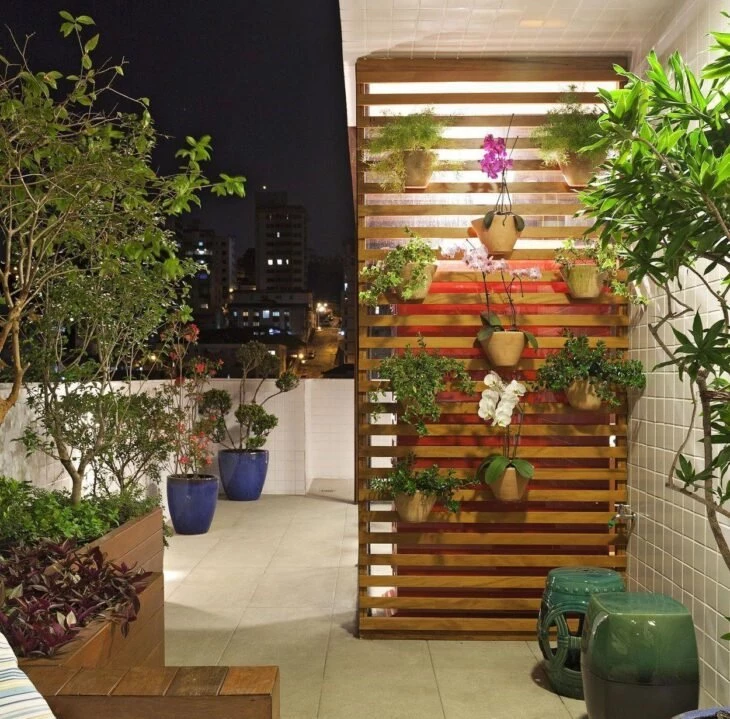
7. pet bottles can also be used as vases
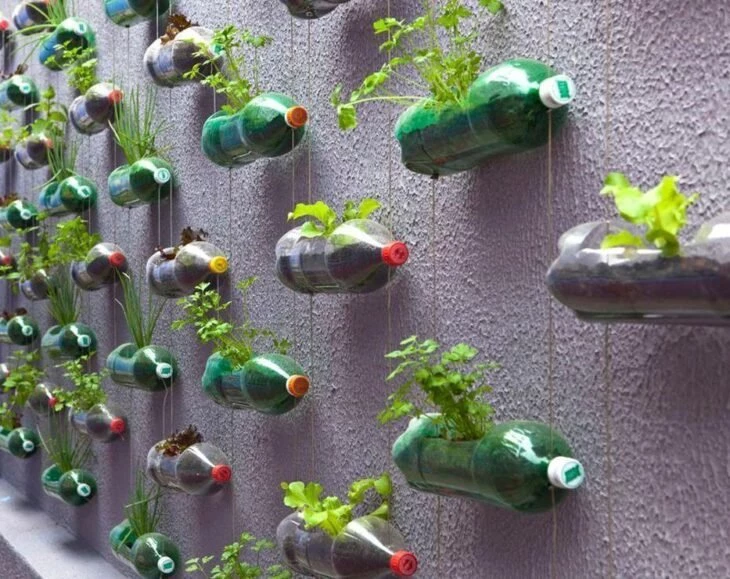
8. wired panel, flower boxes and leather ribbons for hanging

9. vases arranged in the shape of a ladder

10. creative balcony vegetable garden
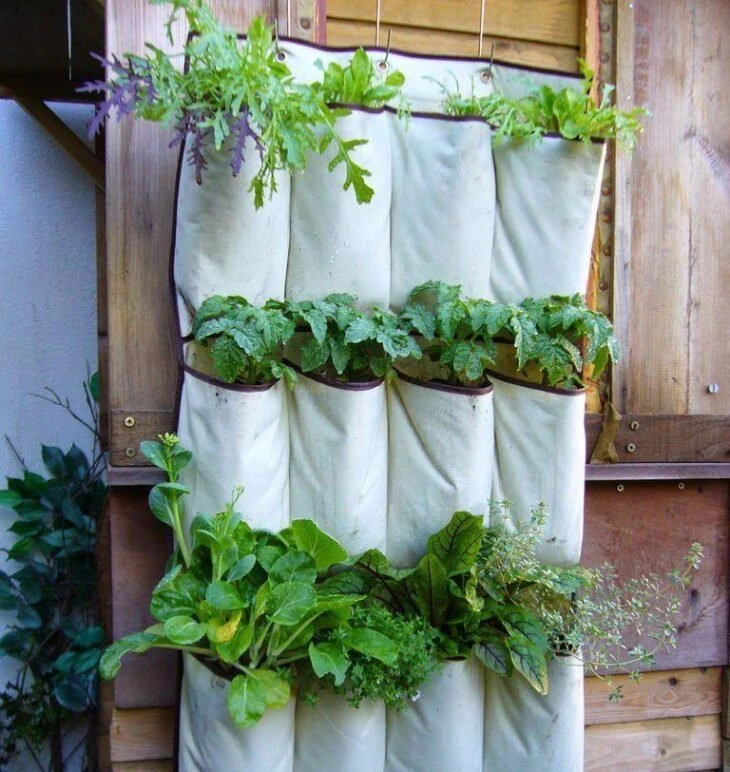
11. pallet with mini pots
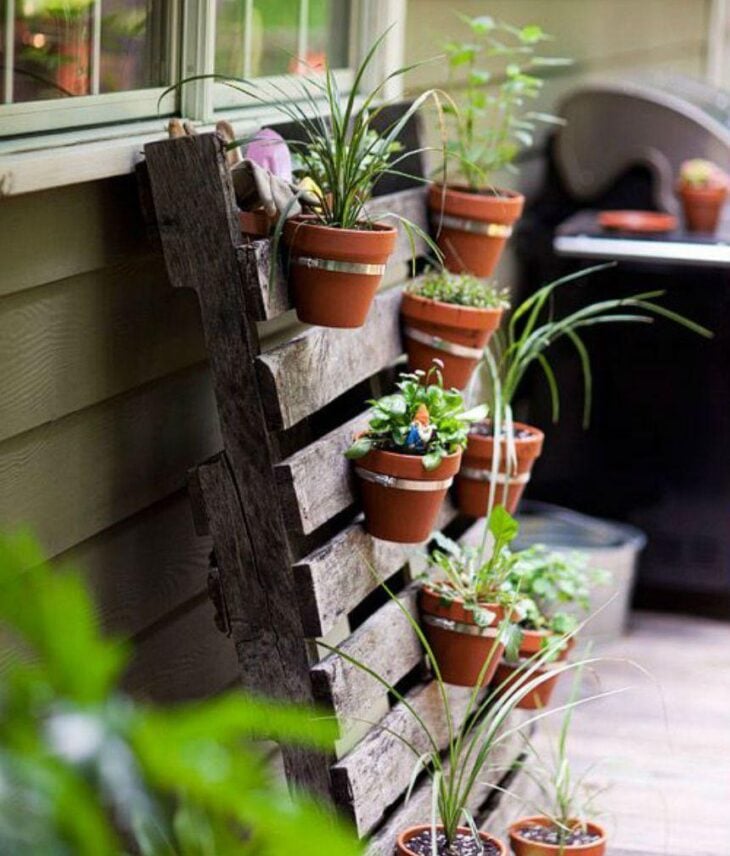
12. vegetable garden with chalk details

13. details in the organization of the vegetables
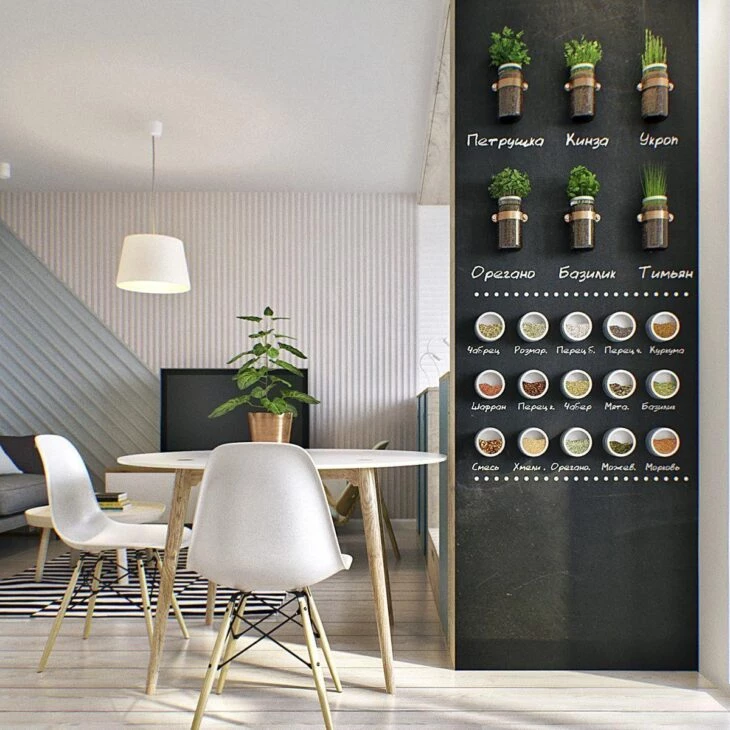
14. window garden
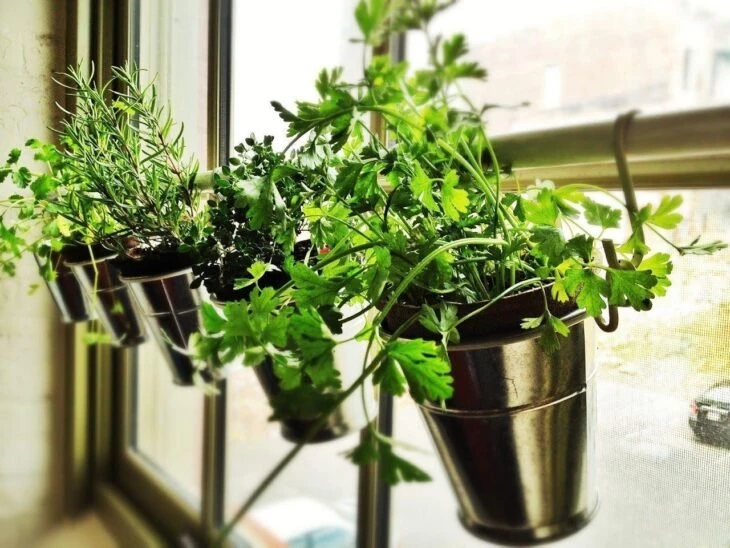
15. great option for camouflaging an old wall
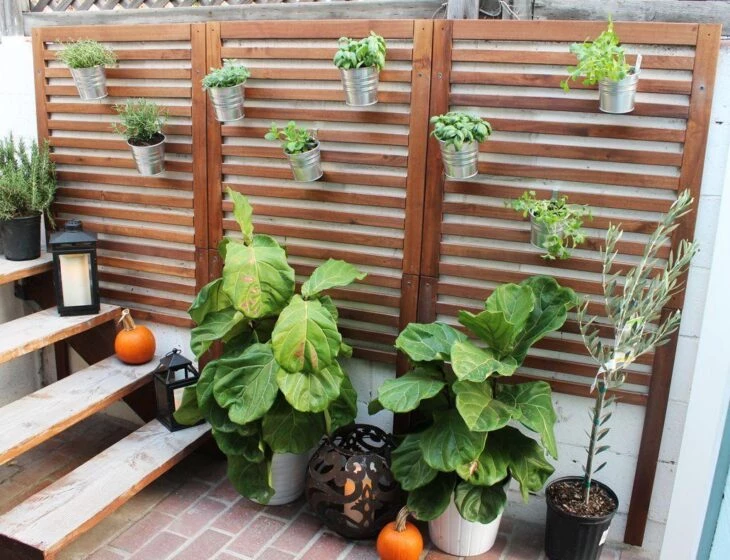
16. inside the house also applies
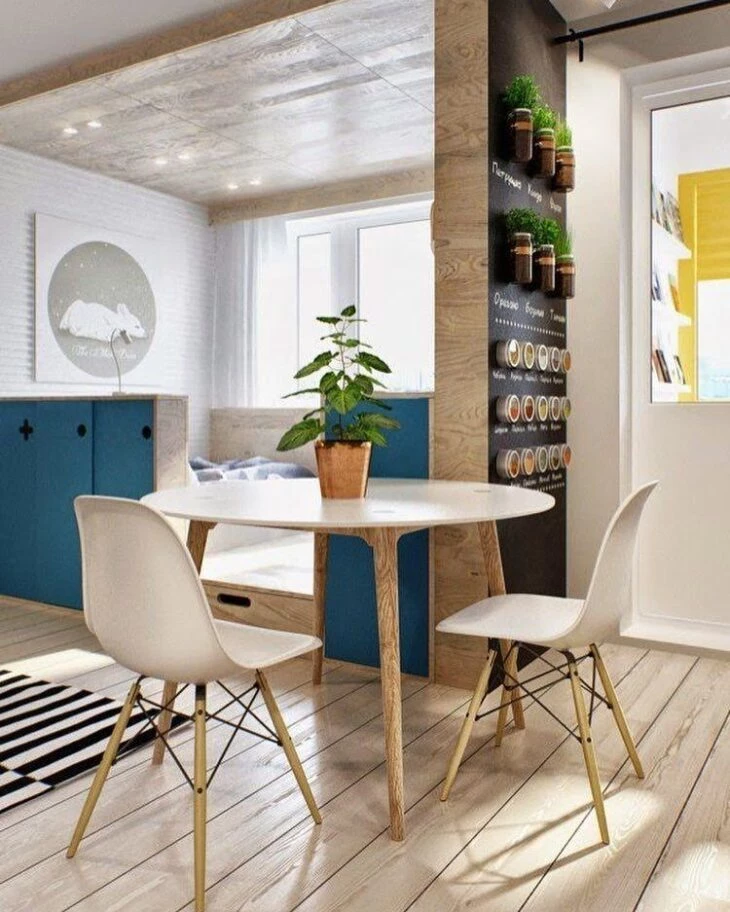
17. niche-shaped
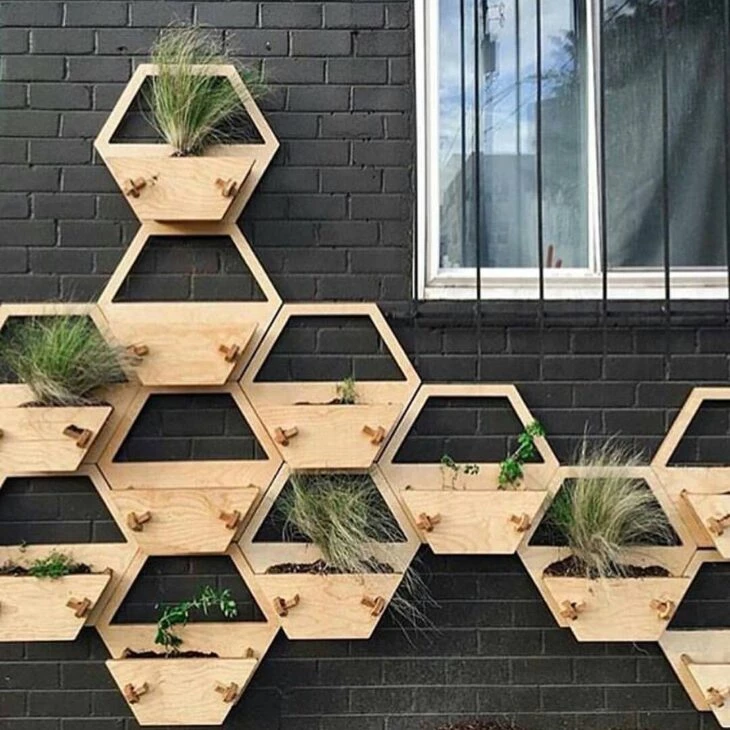
18. set of mini clay pots

19. you can also use hooks to hang your vases
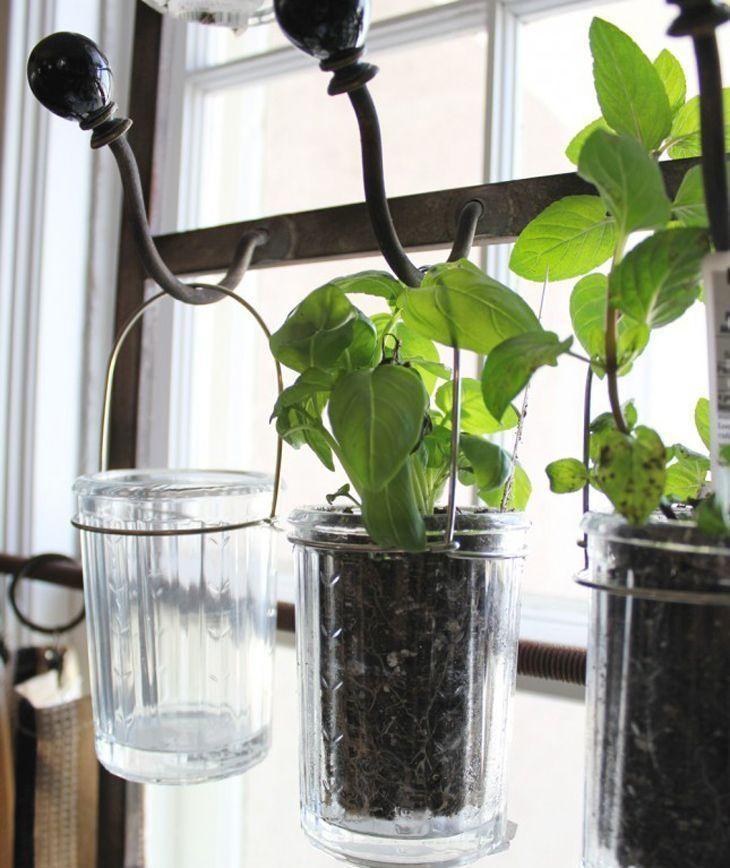
20. delicate set of little plants
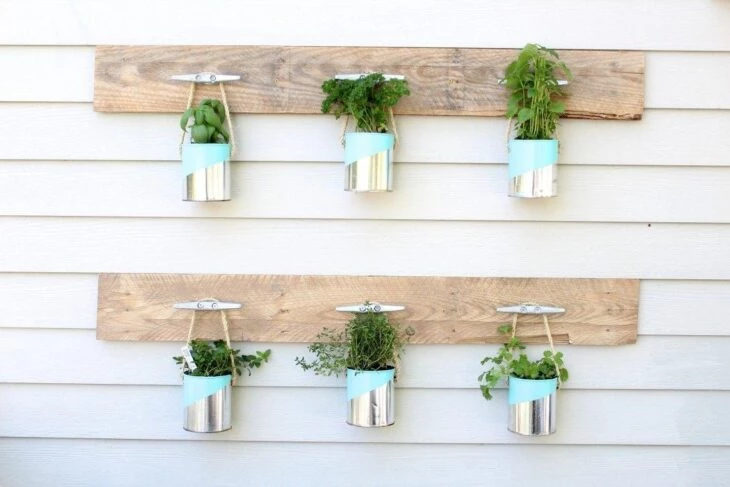
21. vase holders made from lampshade metal

22. you can choose to grow as many types of herbs as you like
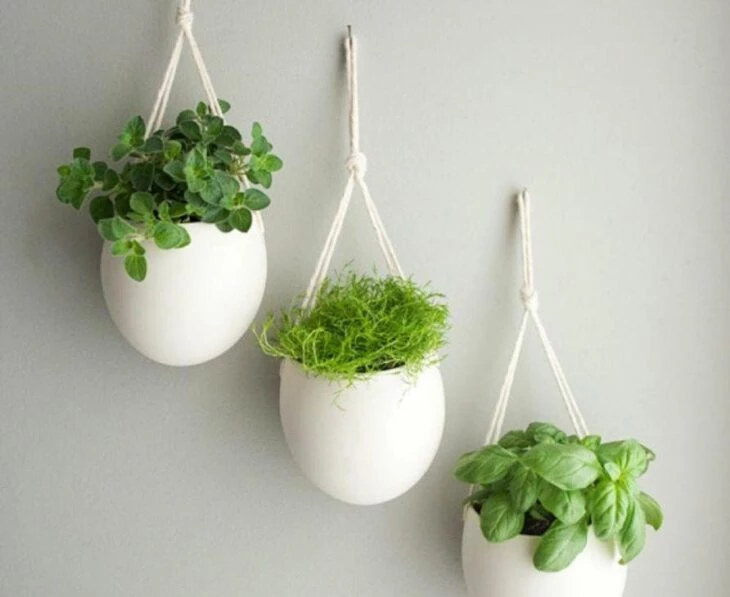
23. the dining room gets even more style

24. simple and easy way to cultivate your vegetable garden
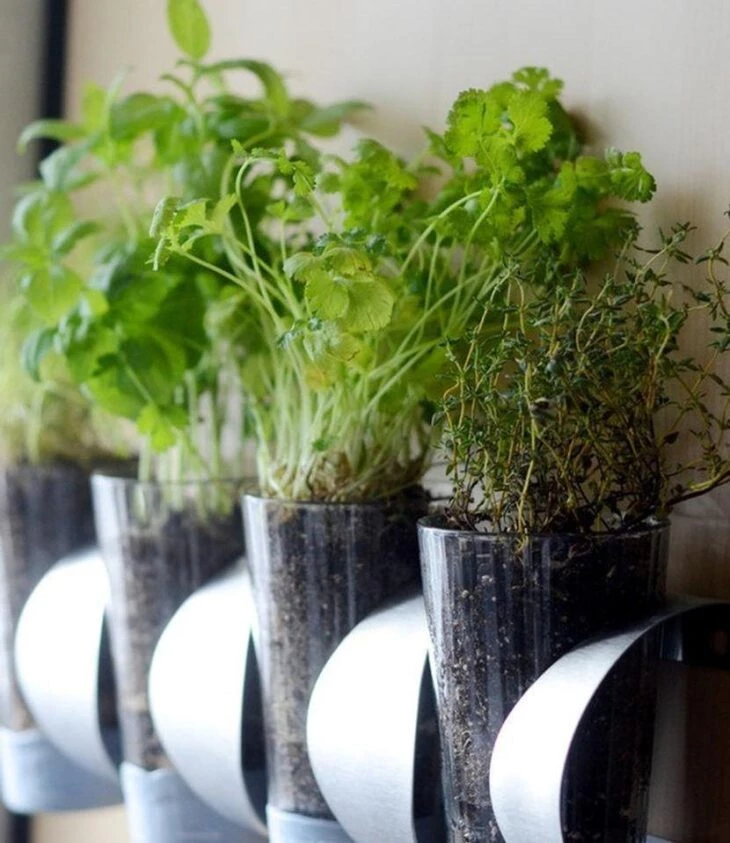
25. customized cans can also become vases

26. charming vertical garden with pallets
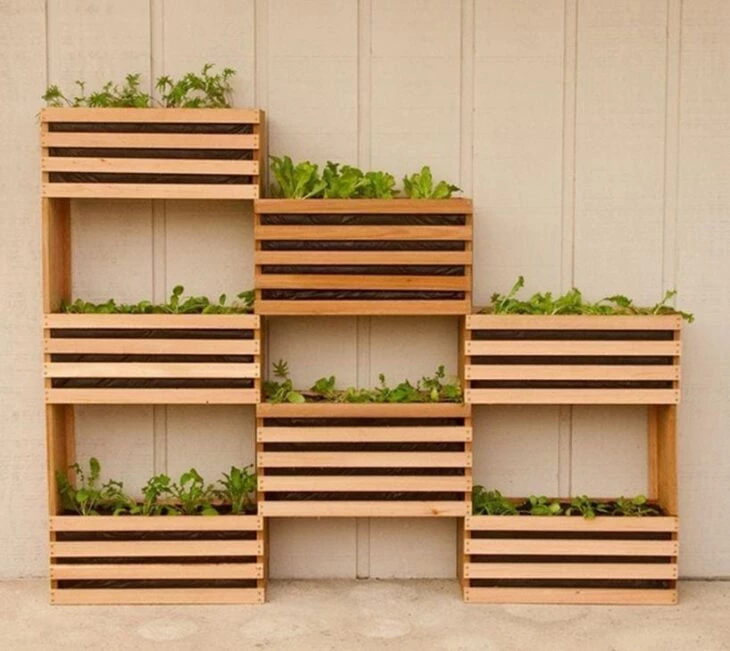
27. grouped vases very easy to reproduce

28. simple kitchen garden
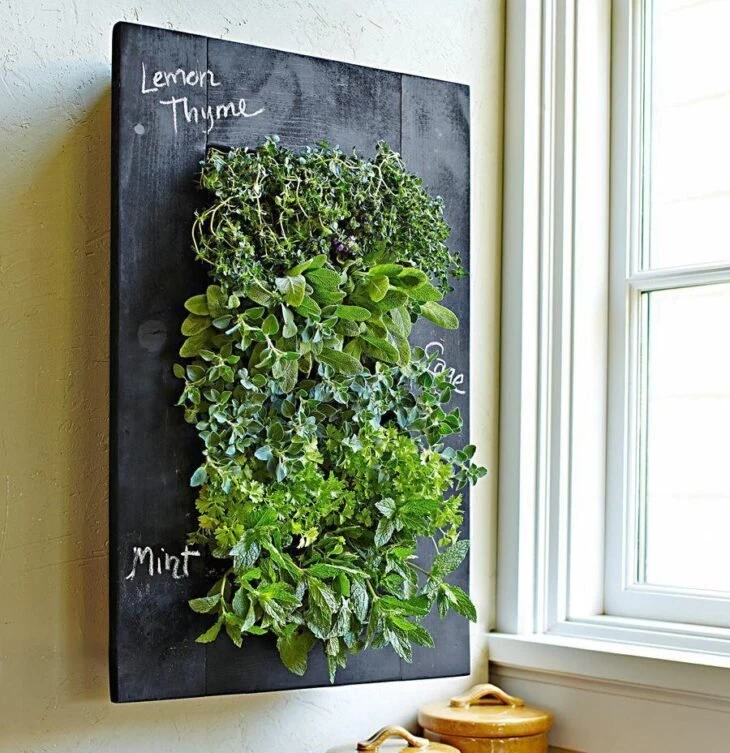
29. plants bring life to the space

30. contemporary looking garden
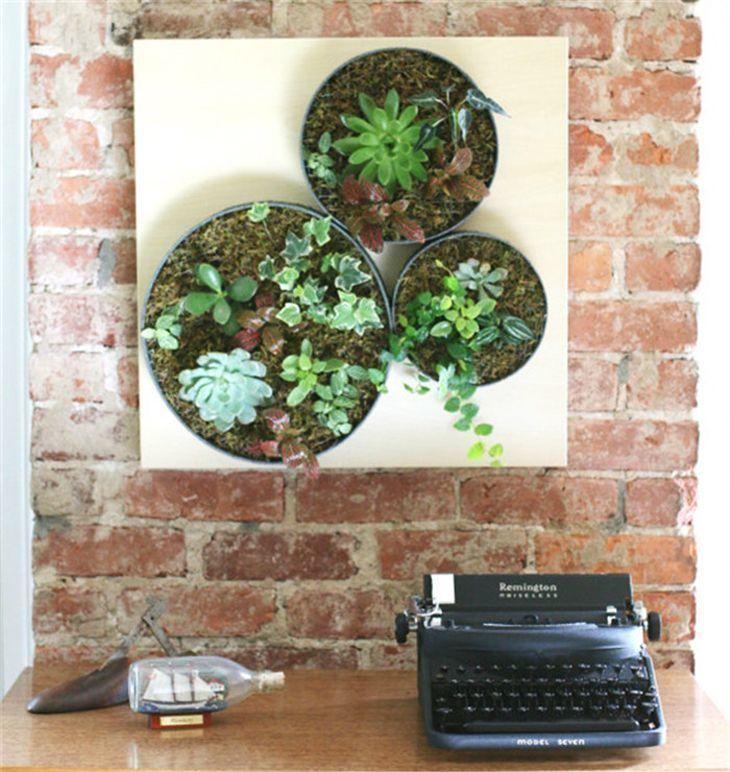
31. with deck plates
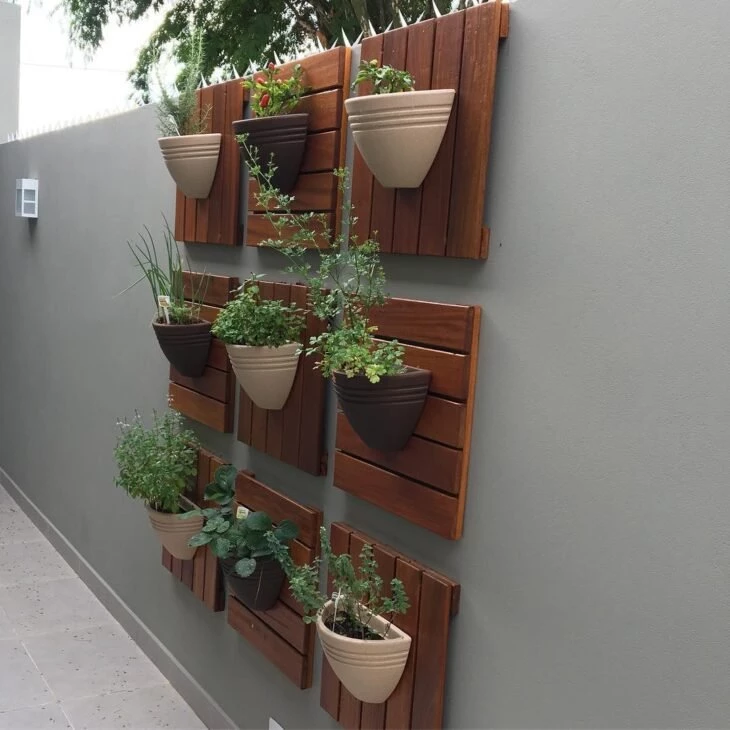
32. another wired option

33. the chains look amazing
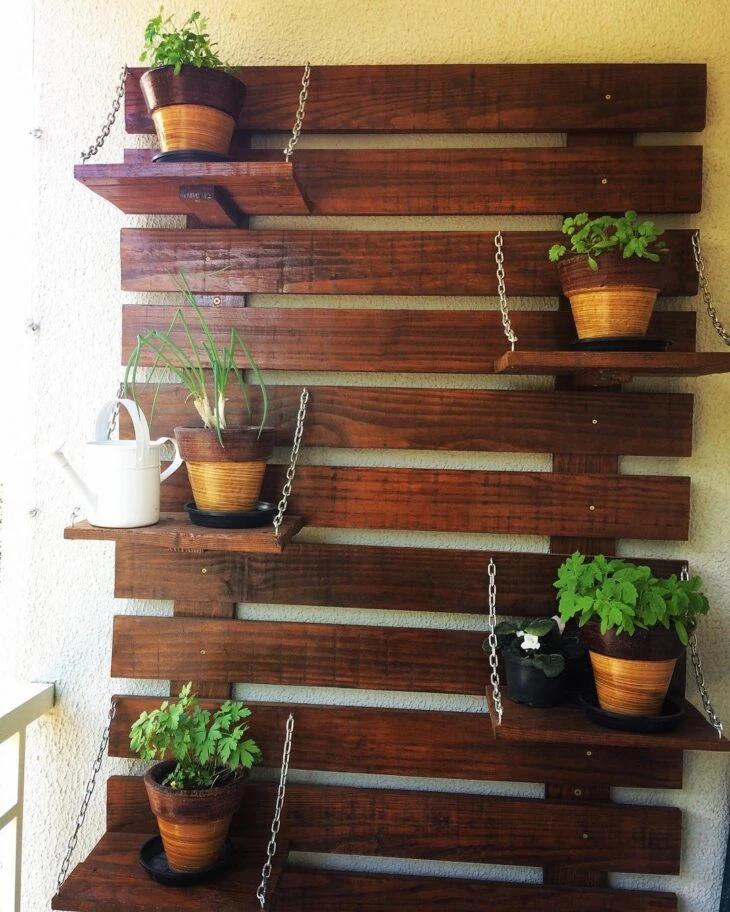
34. How about a special jar for the chili peppers?
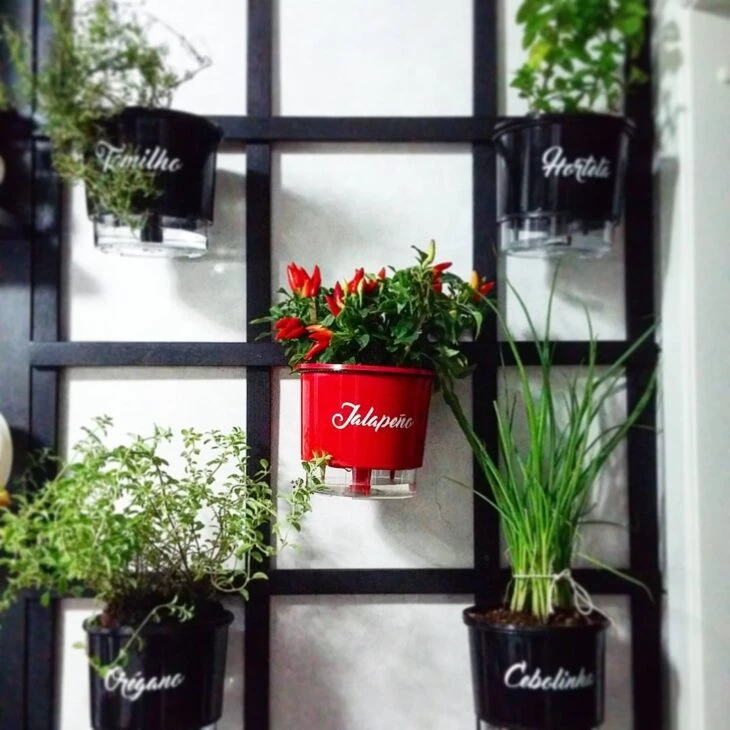
35. perfect for an apartment
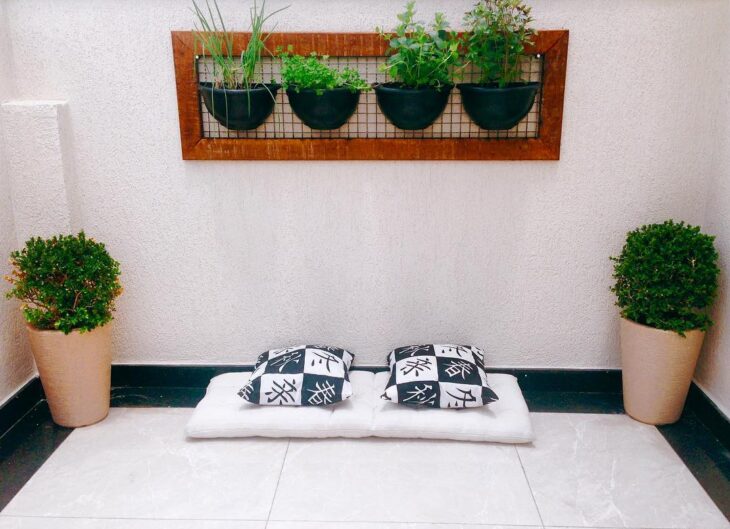
Where to buy items for vertical vegetable garden
Besides the basic care, you can also purchase accessories and tools to help you plant your hanging garden. From soil to fill the pots to ready-to-use planters, there are many sites that have gardening materials available, and the best, without leaving home. Check out some below:
See_also: E.V.A. Bunny: Make your Easter fun with 30 great ideas1. trowel with wooden handle, from Tramontina

2. mini fork with wooden handle, from Tramontina
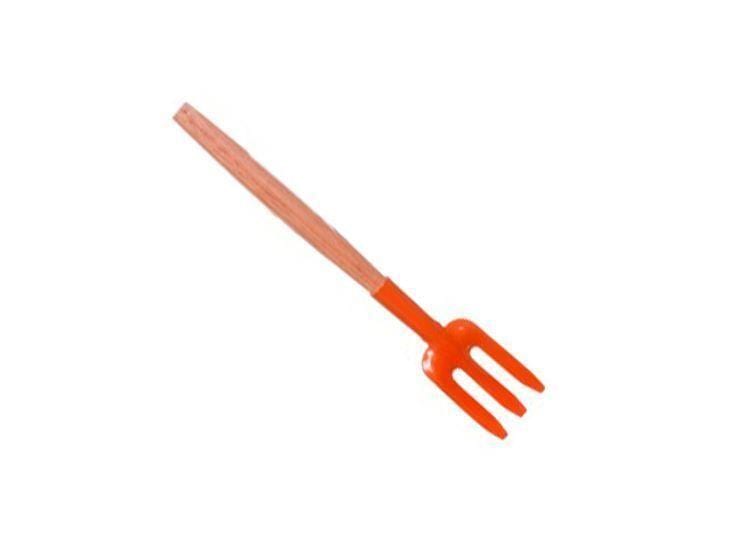
3. coconut fiber panel, by Coquim
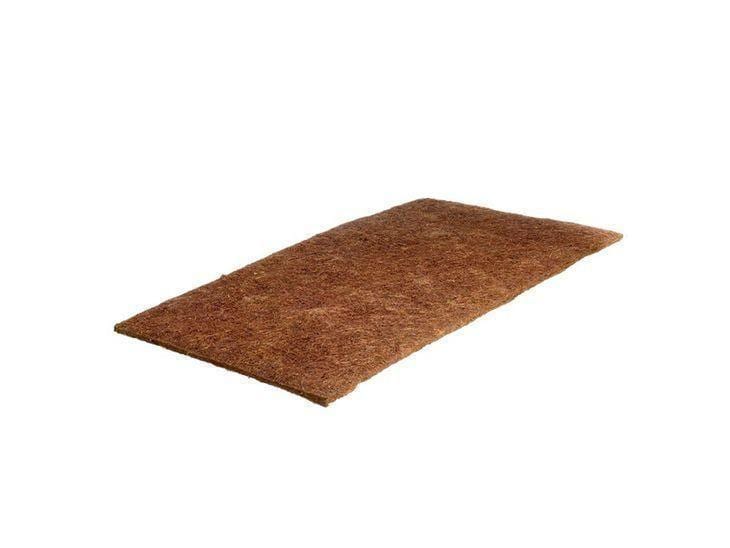
4. jatobá wood lattice, from Stain
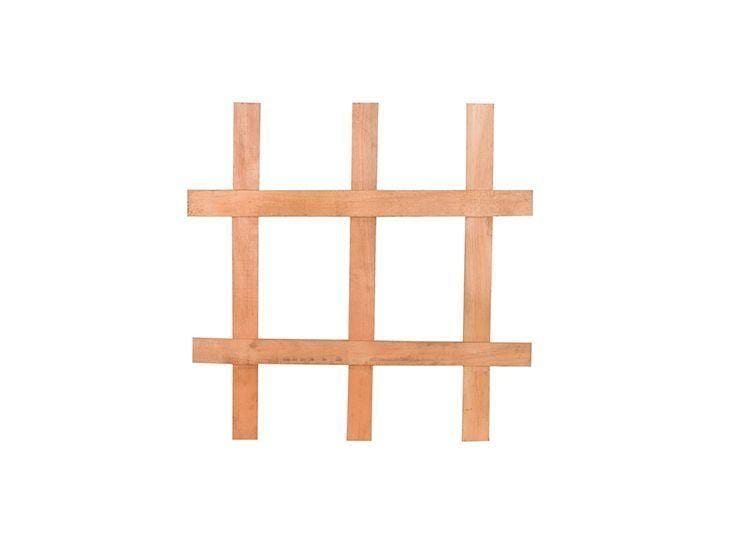
5. harvest shears, from Tramontina
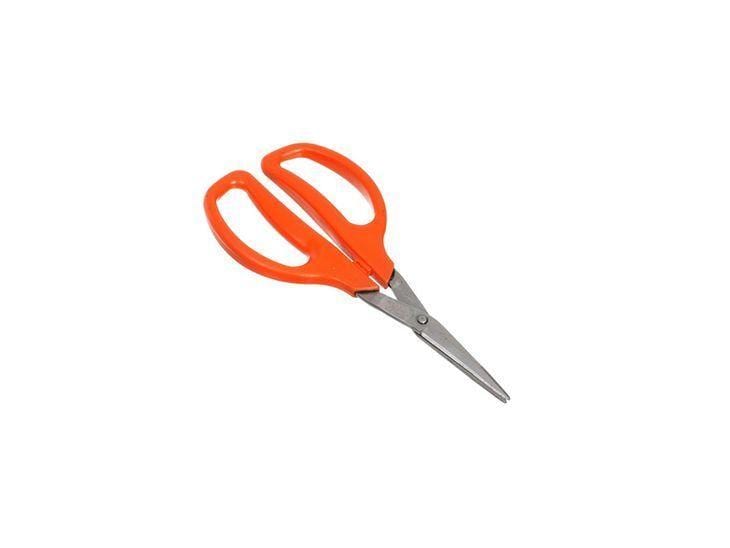
6. 4-cachepot planter, from Cia Bistrô
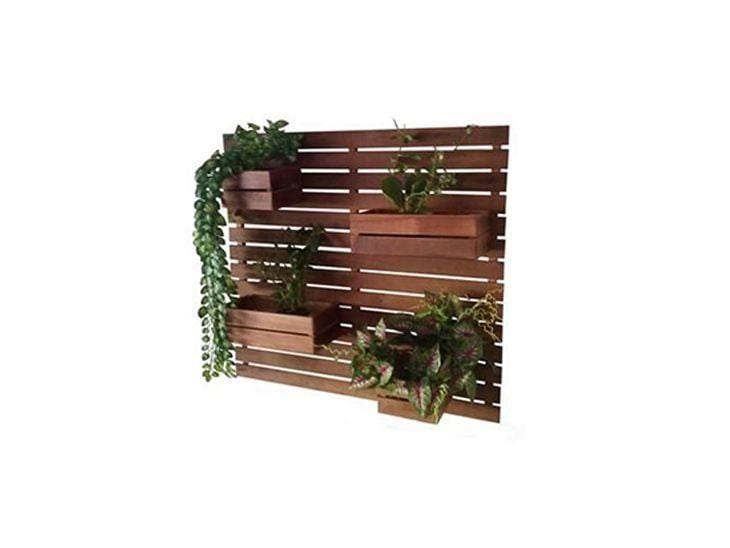
7. pot holders, from F.N.
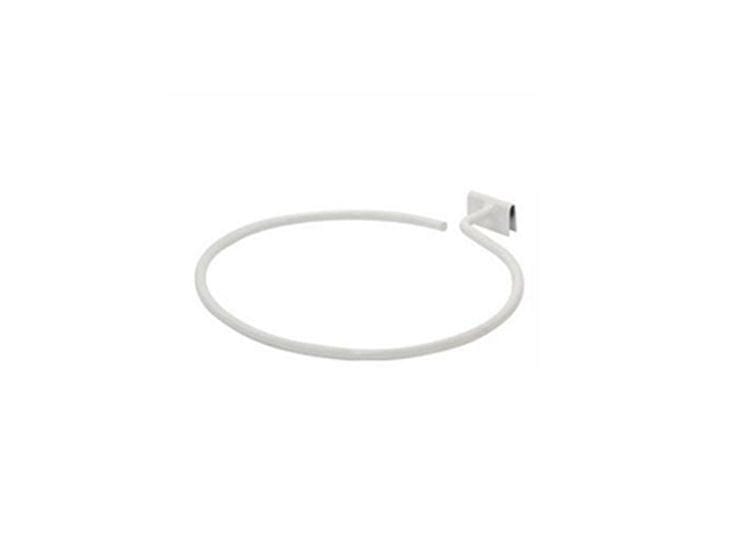
8. wooden flower box, by Lyor Classic
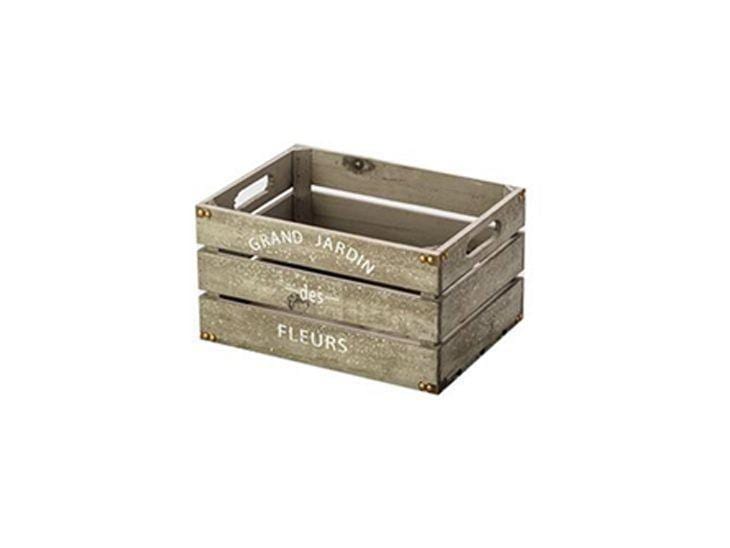
9. vegetable earth, from Vitaplan

10. compact self-watering vegetable garden, by Cultive Tripla

11. mini vertical self-watering vegetable garden, by ISTO!
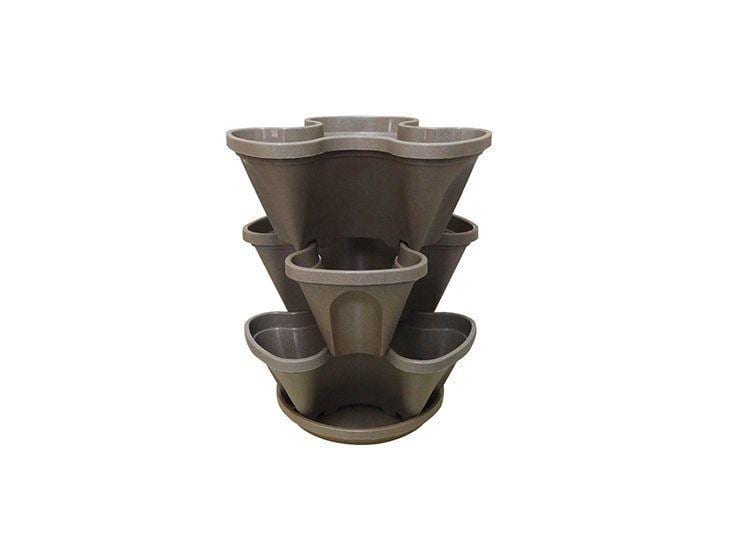
12.coconut fiber vase, by Coquim
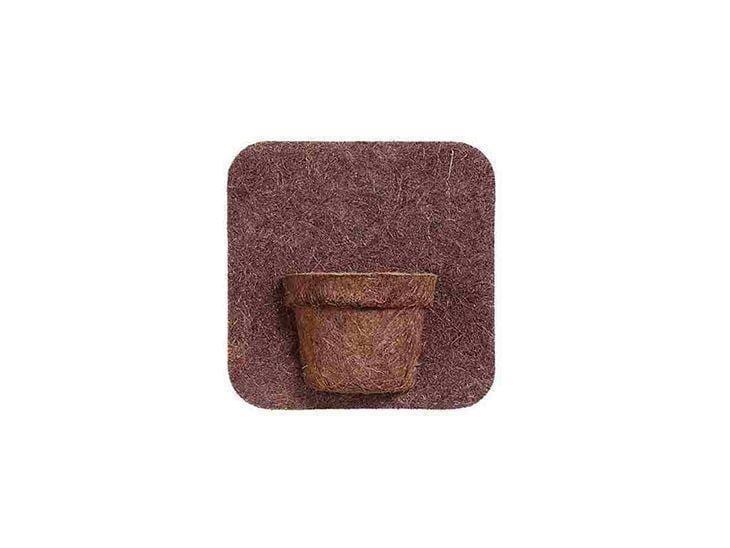
13. moisture sensor for plants, from Jardina Garden Design
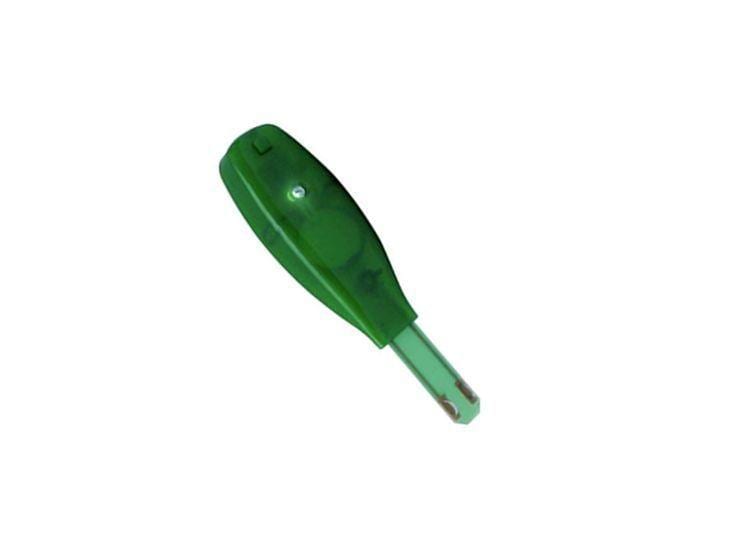
14. eucalyptus wood planter, from M Design

15. wall platform, by Hand and Chisel
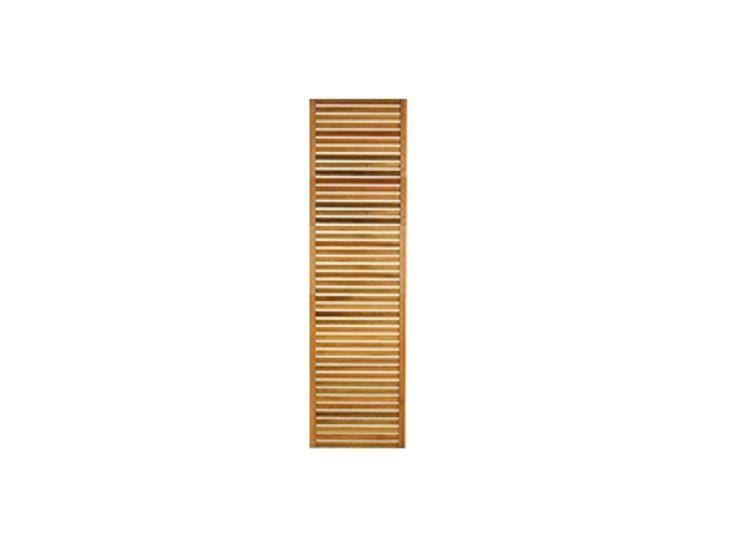
16. set of gardening utensils, from Tramontina
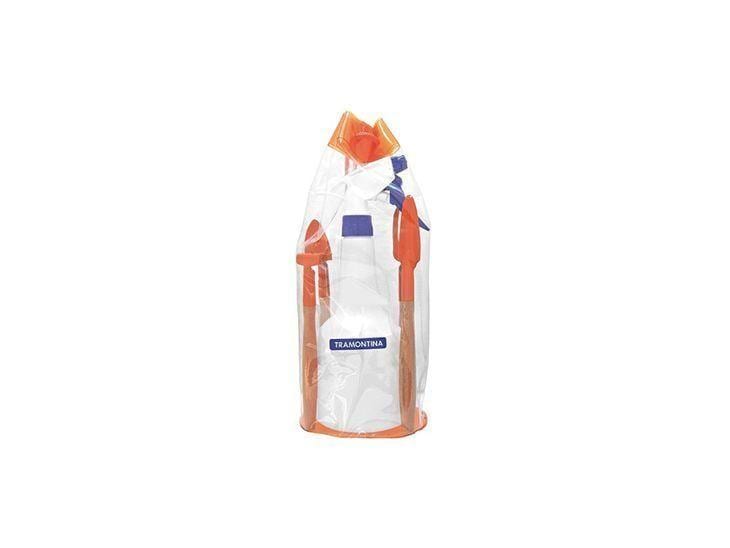
17. mini self-watering pot, by Raiz Vasos
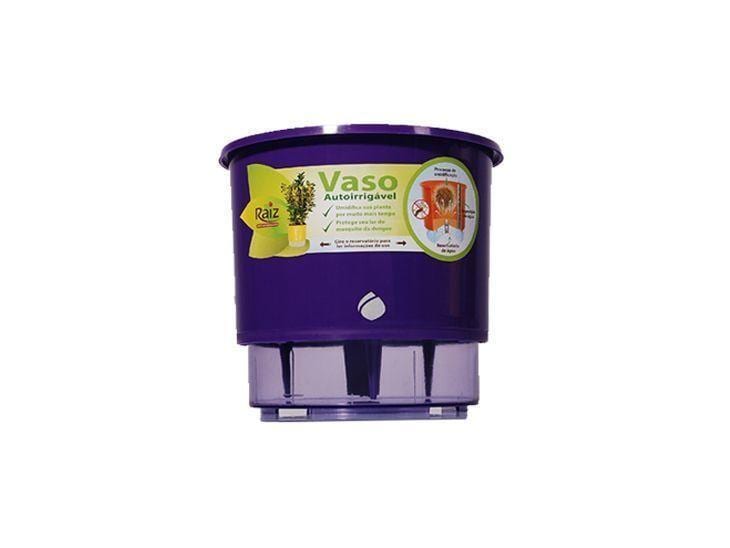
18. yellow Cachepot, by Tramontina
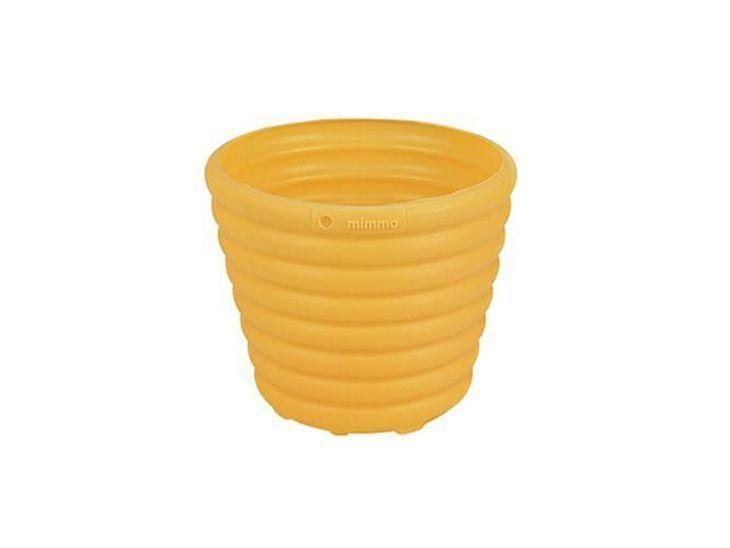
19. vase holder, from Bemfixa
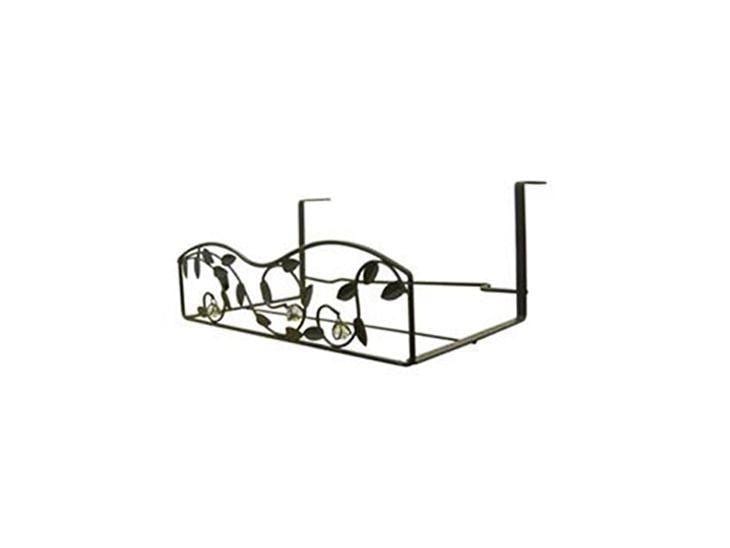
20. manual sprayer, from Tramontina
 In addition to providing a healthier eating style to your life, the environment will gain a lot more personality. Despite the many precautions that must be taken, the satisfaction in seeing your plant growing will be incredible. Don't forget that if you don't want to invest too much, you can always use containers and materialsrecyclables, demolition wood panels, and glass jars are great options.
In addition to providing a healthier eating style to your life, the environment will gain a lot more personality. Despite the many precautions that must be taken, the satisfaction in seeing your plant growing will be incredible. Don't forget that if you don't want to invest too much, you can always use containers and materialsrecyclables, demolition wood panels, and glass jars are great options.



